Class: Crinoidea Miller, 1821
Crinoids are a long-lived class of invertebrates, with fossil remains found from Ordovician times to the present day. Researchers often find fossils of these marine creatures (nicknamed sea lilies) as small disc-shaped columnals with a central hole—the lumen. In life, muscle tissues hold together the columnal pieces in the stalk, making them flexible and allowing the crinoid to sway. They filter feed by capturing microscopic food particles from the water using the arms and pinnules, which transfer the food to the calyx.
The shape of the columnals—or the lumen—can help determine the genus, but not in a reliable way. All recovered columns and corresponding lumens from the Brush Creek limestone in Parks Township are circular. Plate specimens from the calyx, the central portion of the animal containing digestive organs, are scarce. In nearly all crinoid calyces, there are five basal plates where the stalk attaches, a layout similar to the arms of a starfish, another member of the Echinodermata. Adult animals in this phylum often have five-point radial symmetry.
Crinoid columnals from the animal’s stem are common and medium-sized in the Parks Township Brush Creek limestone. They are uncommon and small at the Kittanning Pine Creek limestone locale. Identification using only the columnal is nearly impossible at either location; you need the calyx to determine a species best. Other sites worldwide preserve specimens with articulated stacks of columnals with an attached calyx. The best local examples from this book’s two Armstrong County locales are only pieces.
The longest specimen found in four years of searching is a stack of 22 columnals (CG-0022) that measures 4 cm long. I have seen primarily disarticulated calyx pieces in the same period and only one near-complete calyx (CG-0695). The largest calyx petal (CG-0108) from the Brush Creek limestone has fascinating details, including a matrix of raised nodes across the face. CG-0033 is the crinoid columnal with the largest diameter. CG-0459 shows a cirrus scar, the place where cirri attach. These are arms that branch off of the central stalk. Columnals without cirri scars are called internodals.
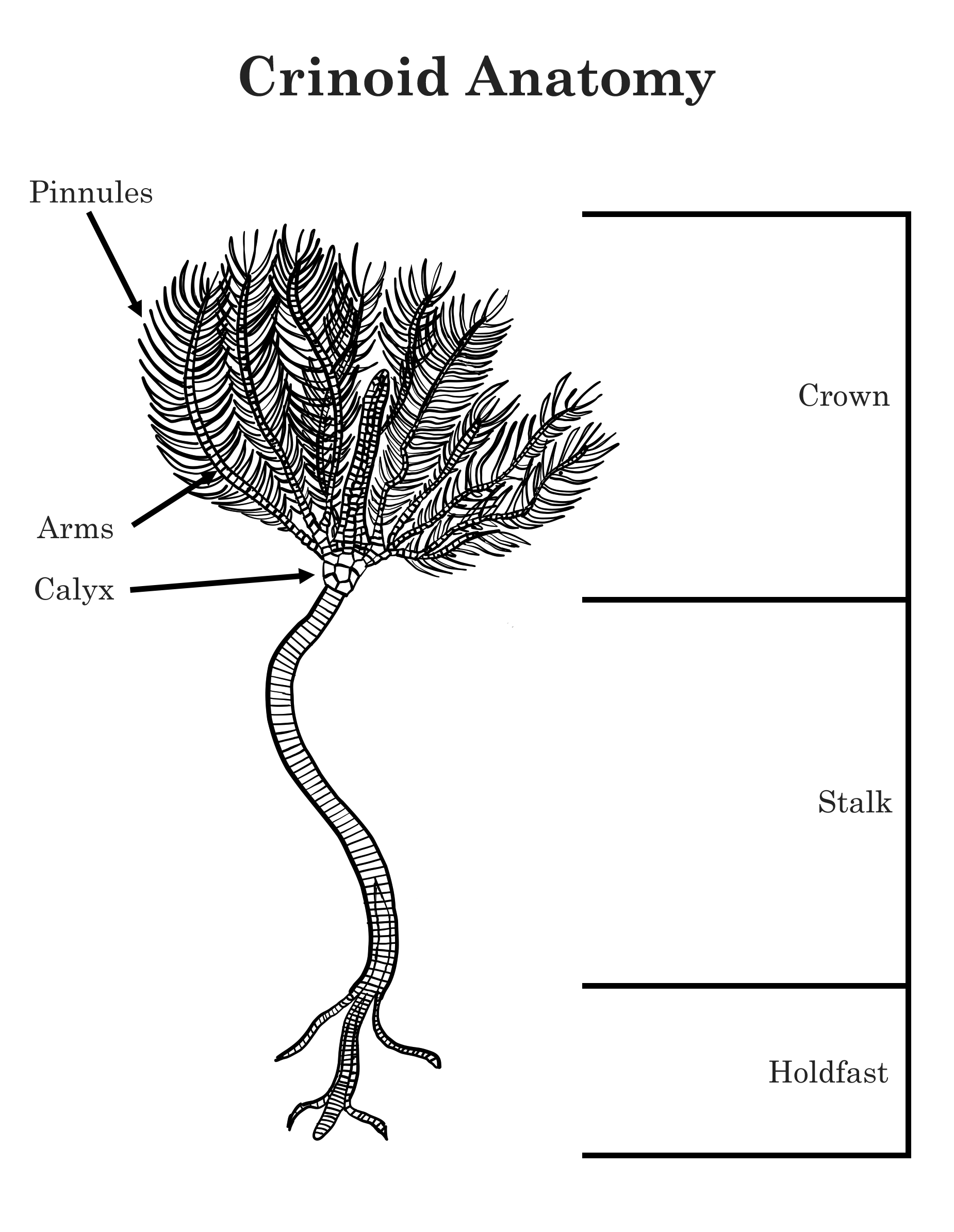
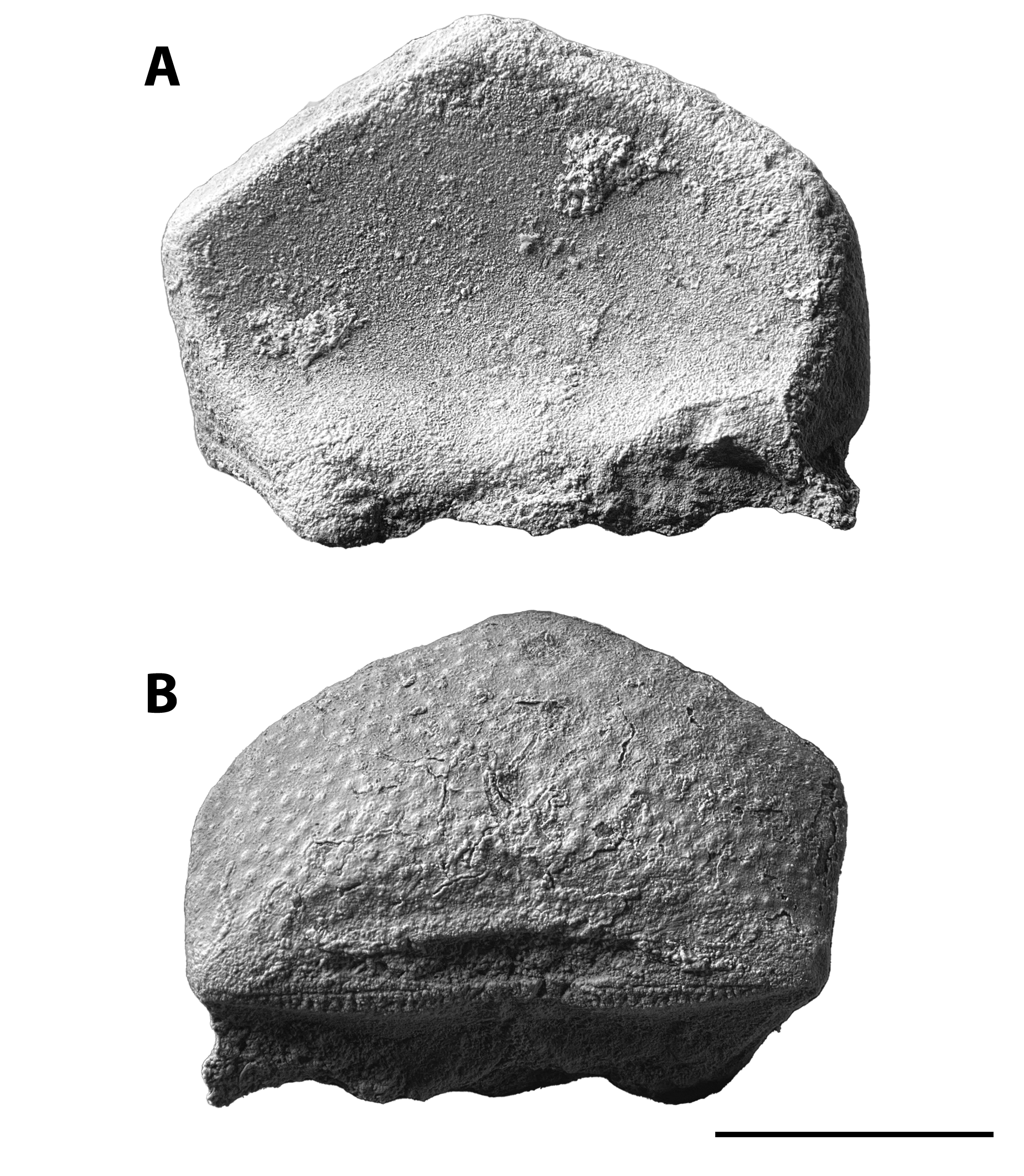
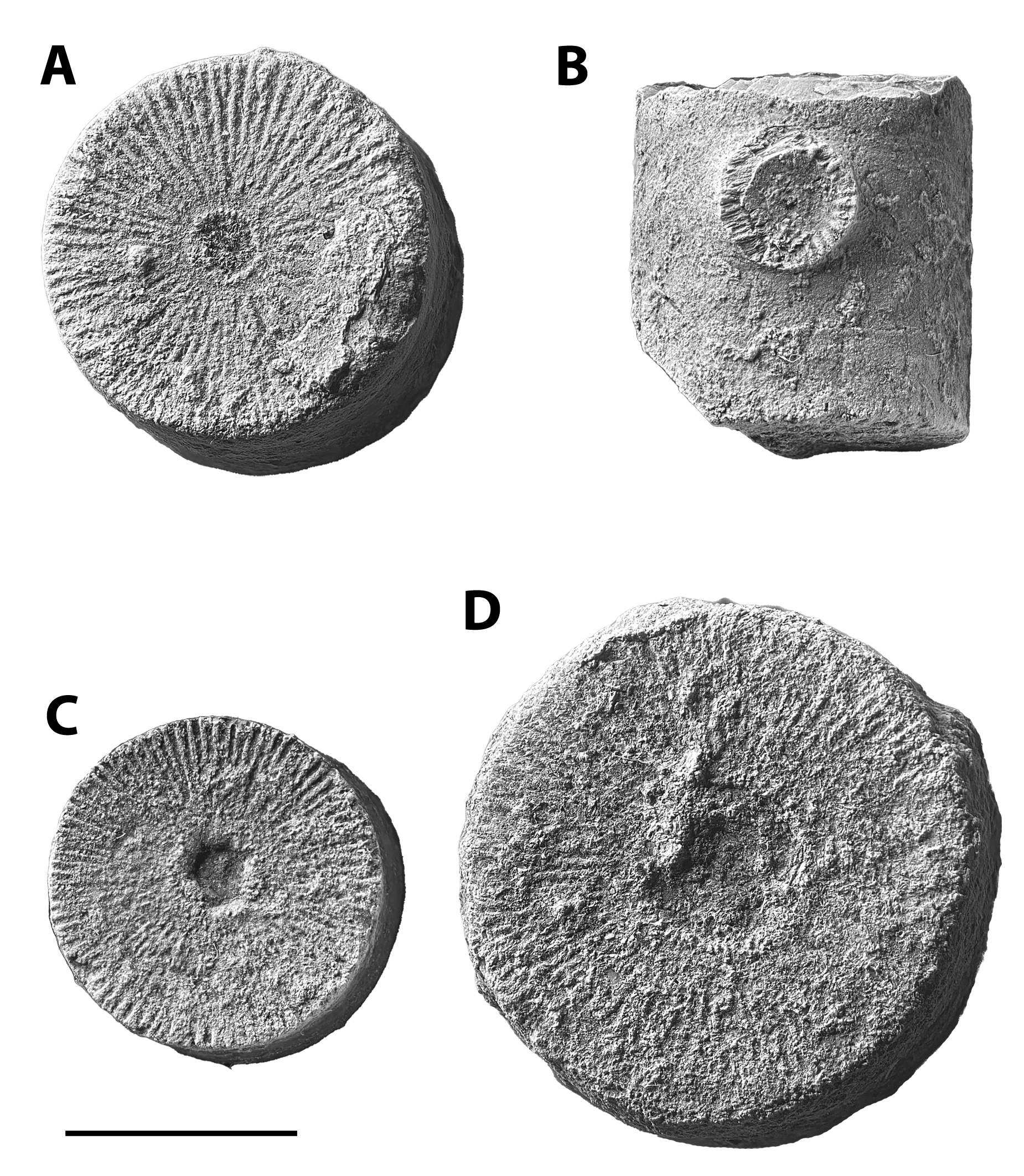
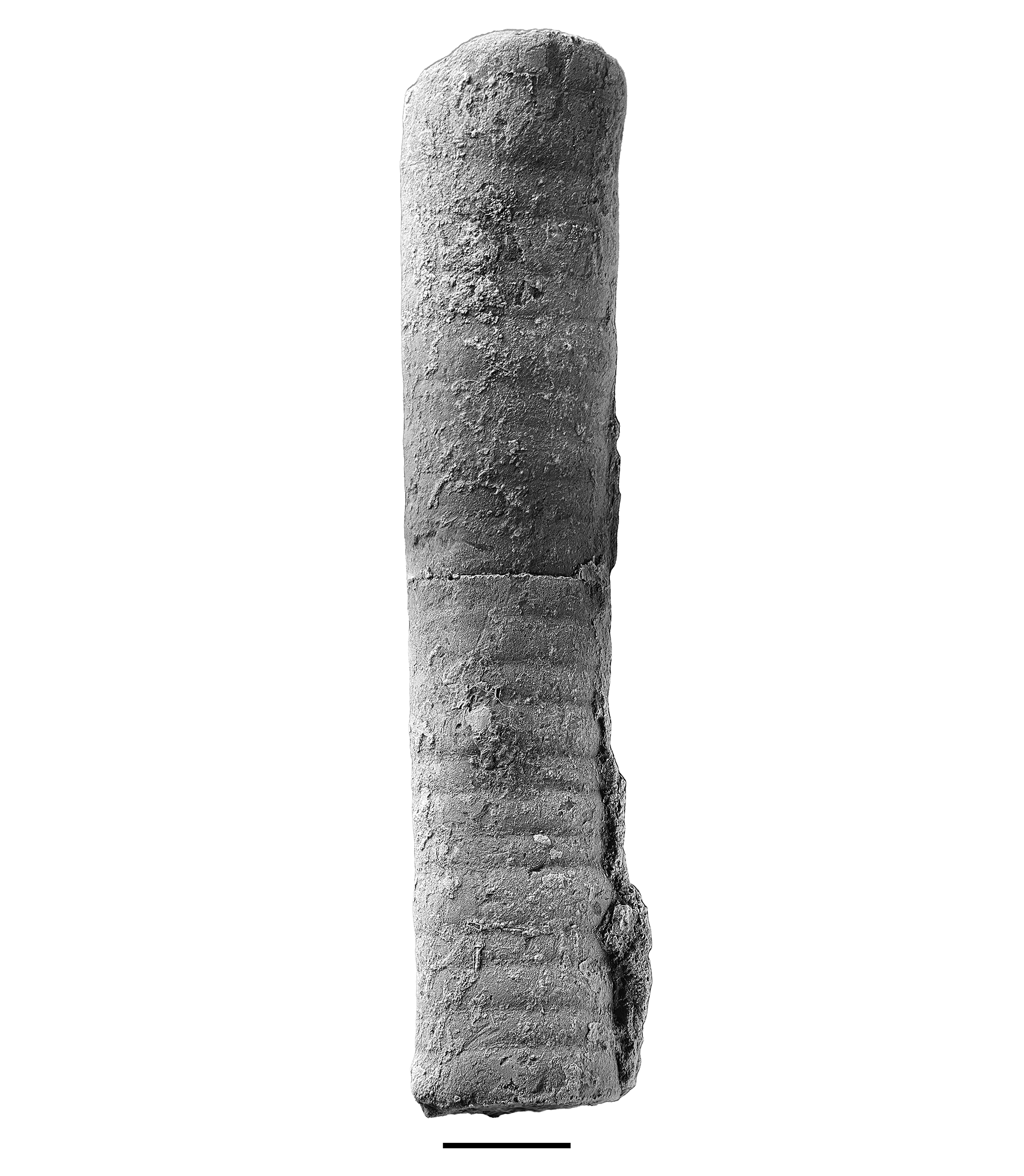
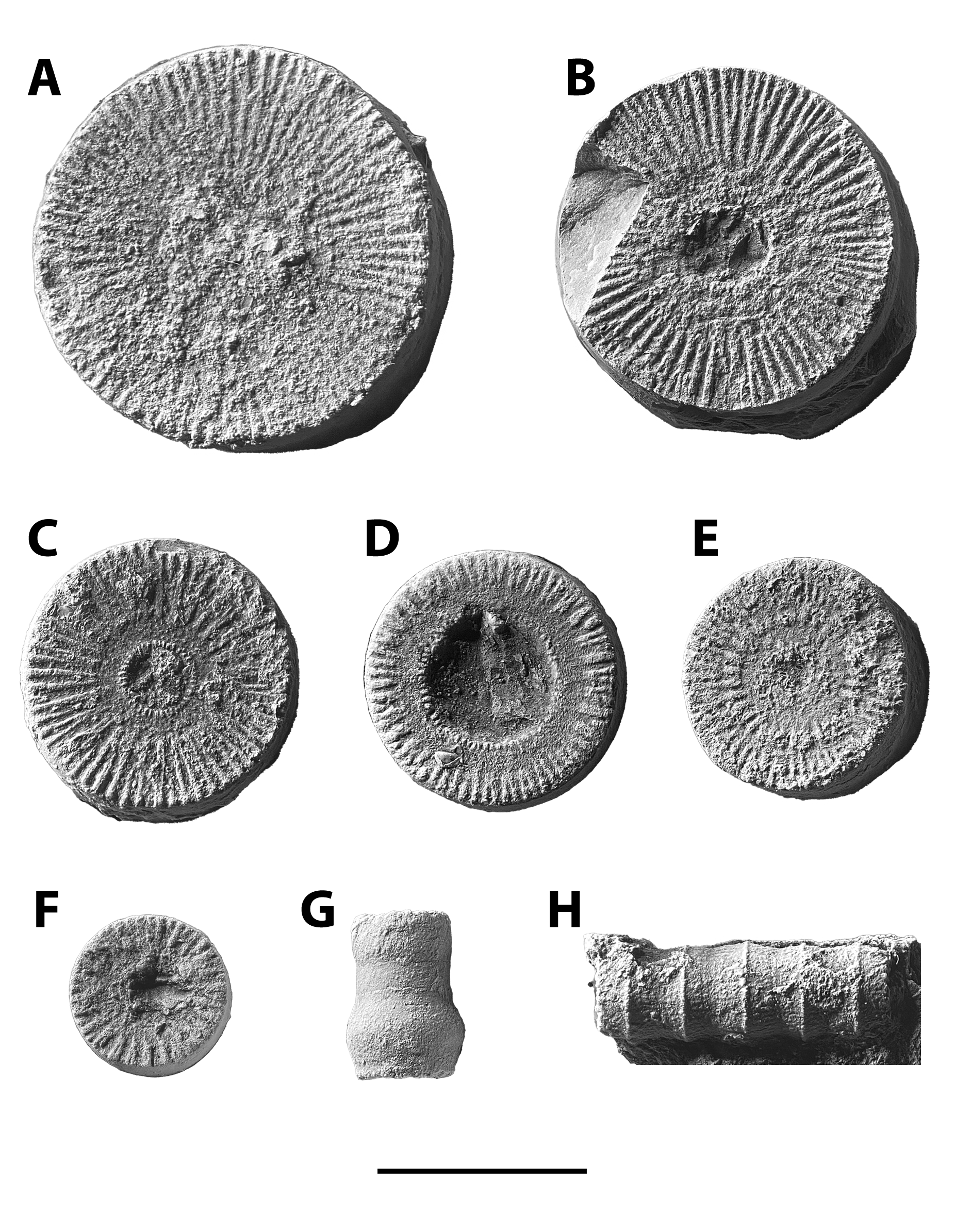
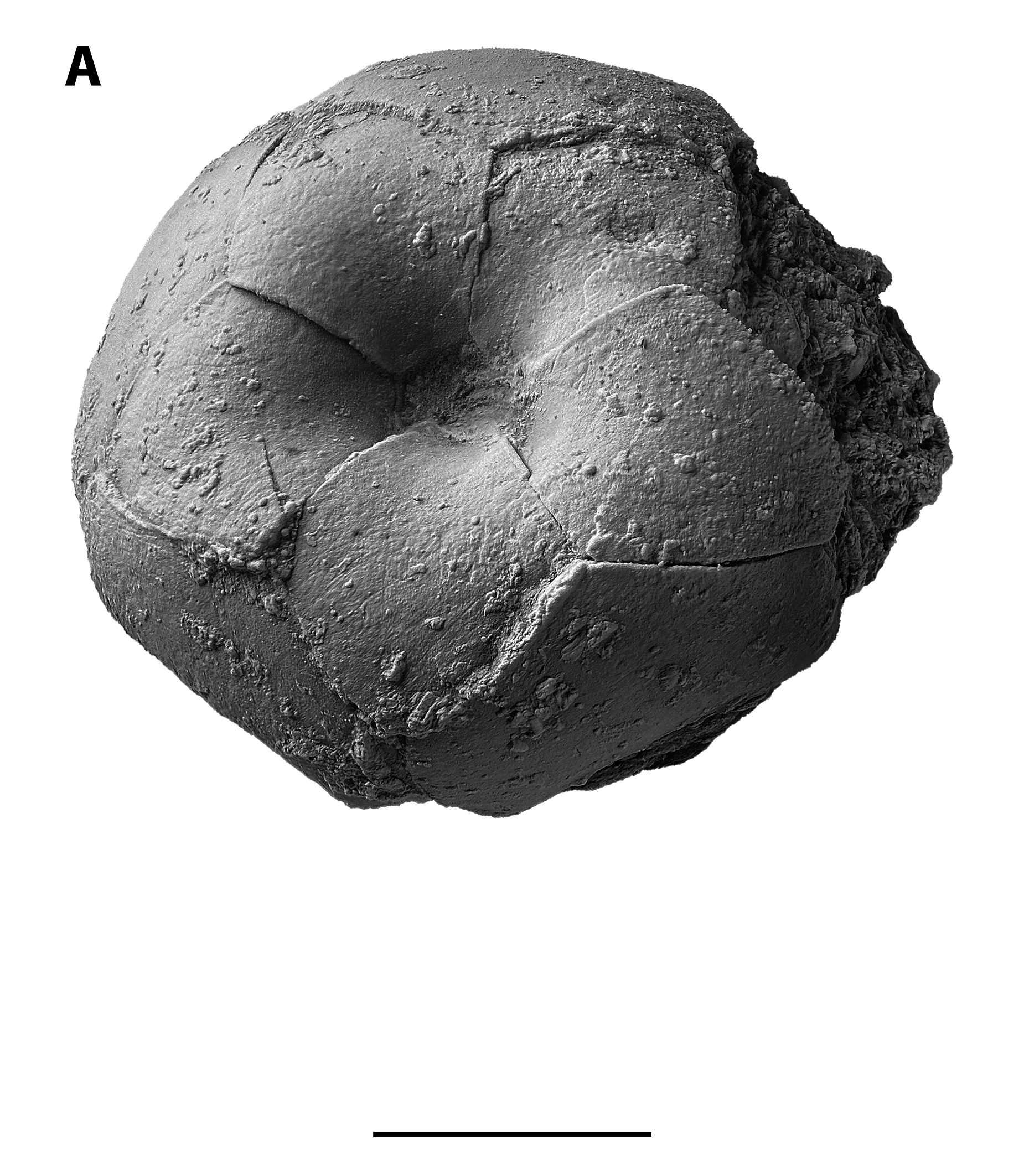
References
- Miller, J. S., 1821. A natural history of the Crinoidea, or lily-shaped animals : with observations on the genera, Asteria, Euryale, Comatula & Marsupites

Late Carboniferous Fossils from the Glenshaw Formation in Armstrong County, Pennsylvania
Preface | The Photographic Process
Localities: Locality SL 6445 Brush Creek limestone | Locality SL 6533 Pine Creek limestone
Bivalvia: Allopinna | Parallelodon | Septimyalina
Cephalopoda: Metacoceras | Poterioceras | Pseudorthoceras | Solenochilus
Gastropoda: Amphiscapha | Bellerophon | Cymatospira | Euphemites | Glabrocingulum | Meekospira | Orthonychia | Patellilabia | Pharkidonotus | Retispira | Shansiella | Strobeus | Trepospira | Worthenia
Brachiopoda: Cancrinella | Composita | Isogramma | Linoproductus | Neospirifer | Parajuresania | Pulchratia
